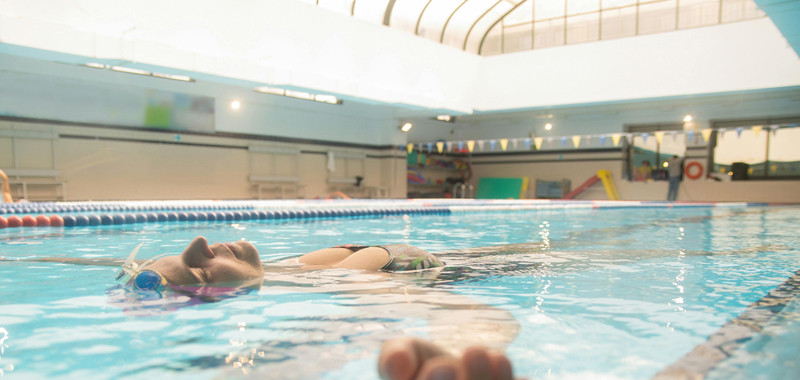8th May 2025
Hydrotherapy at Home: Essential Equipment & Safety Tips
Hydrotherapy has long been used in clinics and hospitals to support physical rehabilitation, reduce pain, and improve mobility. But did you know you don’t need to leave the house to benefit from it? With a bit of planning, some simple equipment, and a few precautions, you can create a relaxing, therapeutic setup right at home. Whether you're supporting a loved one with mobility issues, managing your own chronic pain, or just exploring gentle ways to stay active, home hydrotherapy is more doable than you might think.
Creating the Right Environment
First things first: the space. You don’t need a big fancy pool—many people use a standard bathtub, a small plunge tub, or even an inflatable pool designed for therapy use. What matters most is that the area is safe, waterproof, and easy to access. Think about how someone will get in and out of the water. Are there grab bars? Is there a non-slip mat on the floor? Is there a nearby chair or bench?
Water temperature is also key. You’re aiming for a warm, soothing environment—somewhere between 33 and 35 degrees Celsius (about 91 to 95°F). This is warm enough to relax muscles and promote circulation, but not so hot that it could cause overheating. It's especially important to keep the temperature in check if you’re working with children or anyone who has heart, respiratory, or neurological conditions.
Equipment That Makes a Difference
You don’t need a ton of gear, but a few well-chosen items can make your hydrotherapy sessions much more effective and comfortable. Buoyancy aids like float belts, pool noodles (or “woggles”), and foam collars can help keep the body supported in the water, making movements easier and safer—especially for people with joint pain or limited mobility.
Resistance tools are helpful too. Foam dumbbells, aquatic paddles, or water resistance bands let you add a bit of challenge to your movements without overdoing it. The water itself provides resistance, so even simple movements like walking or lifting your arms become a low-impact workout.
One thing people often overlook? Safety gear. A non-slip mat around the pool or tub, well-placed grab bars, and waterproof seating all go a long way in preventing slips and falls. A floating thermometer is also a good idea, just to make sure the water is staying in that safe, therapeutic range.
Making the Most of Each Session
You don’t need to spend hours in the water to see the benefits of hydrotherapy. In fact, shorter sessions tend to be more effective and sustainable. Most people start with 10 to 15 minutes of gentle activity, maybe broken up into a few sets with rest in between. It’s better to ease into a routine and gradually build up as strength and confidence improve.
Before starting, it’s wise to check in with a physiotherapist or doctor—especially if you or your loved one has any existing health concerns. They can help identify the safest exercises to try, and they’ll let you know if there are any red flags that mean water therapy isn’t the right fit (for example, open wounds, uncontrolled epilepsy, or certain heart conditions).
During the session, keep things light and focused on gentle movement. Walking through water, slowly lifting and lowering limbs, or engaging the core while floating can all offer therapeutic value. Use aids for balance and support as needed, and always make sure someone is nearby if the person in the water needs assistance.
Keeping It Clean (And Safe)
When you’re doing hydrotherapy at home, hygiene is just as important as it is in a clinical setting. If you’re using a pool or tub frequently, you’ll want to keep the water clean and well-balanced. That means monitoring chlorine levels (or other disinfectants), testing the pH, and making sure the water stays within a safe and skin-friendly range.
A good rule of thumb is to check the water before each use and clean the surrounding area regularly. If the therapy space is being used by people with reduced immune systems or multiple users, it may be worth looking into weekly microbiological testing, just to be on the safe side.
And yes, everyone should shower before getting in. It might feel like overkill at home, but it really helps maintain water quality and reduce skin and eye irritation over time.
Safety First, Always
As calming as water therapy can be, safety should never take a back seat. Wet surfaces can be slippery, so make sure to use non-slip flooring and always supervise children or anyone who may be unsteady on their feet. If you’re using any electrical equipment nearby—like a pool heater or water jets—be sure they meet safety standards and are installed properly to avoid any risk of shock.
Also, remember that not everyone can safely use hydrotherapy. People with certain heart or respiratory conditions, infections, or unhealed wounds should avoid it unless they’ve been given the all-clear from a medical professional.
The Benefits You Can Expect
Done safely and consistently, hydrotherapy can be incredibly rewarding. It helps ease muscle tension, improve joint flexibility, and boost circulation. Many people also find it improves mood, reduces anxiety, and builds confidence in their movement—especially after injury or during long-term rehabilitation.
That said, hydrotherapy isn’t a miracle cure. It works best as part of a larger routine that might include physiotherapy, medication, or other treatments. Still, having access to this kind of therapy at home can make it easier to stay consistent—and that’s often the key to lasting results.
In Summary…
Setting up hydrotherapy at home doesn’t have to be complicated. With a bit of planning, the right gear, and careful attention to hygiene and safety, you can create a space that offers real physical and emotional benefits.
If you’re not sure where to begin—whether it’s choosing equipment, figuring out what exercises are appropriate, or managing water quality—don’t hesitate to reach out for advice. It’s always better to start well-informed than to dive in unprepared.

